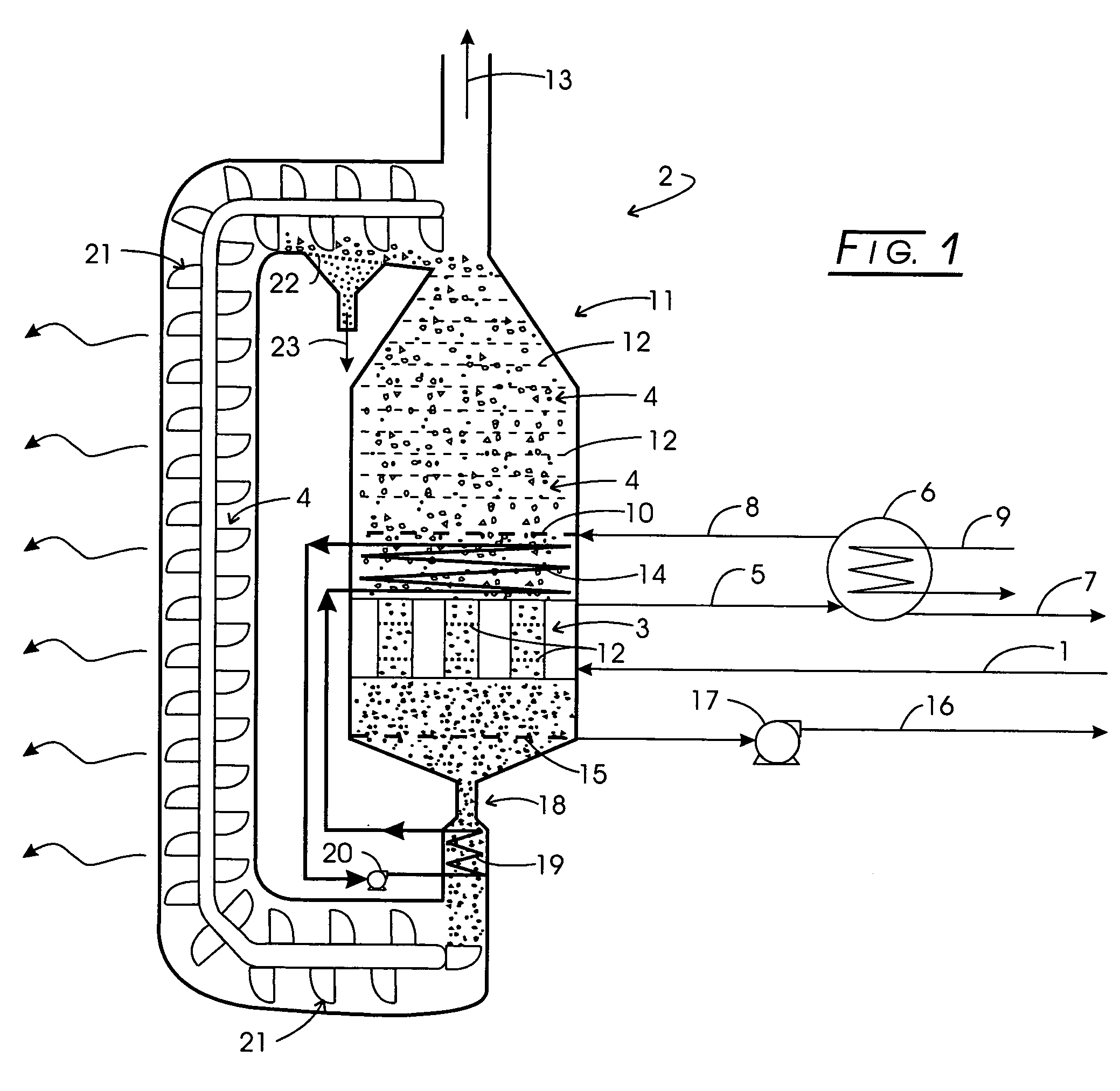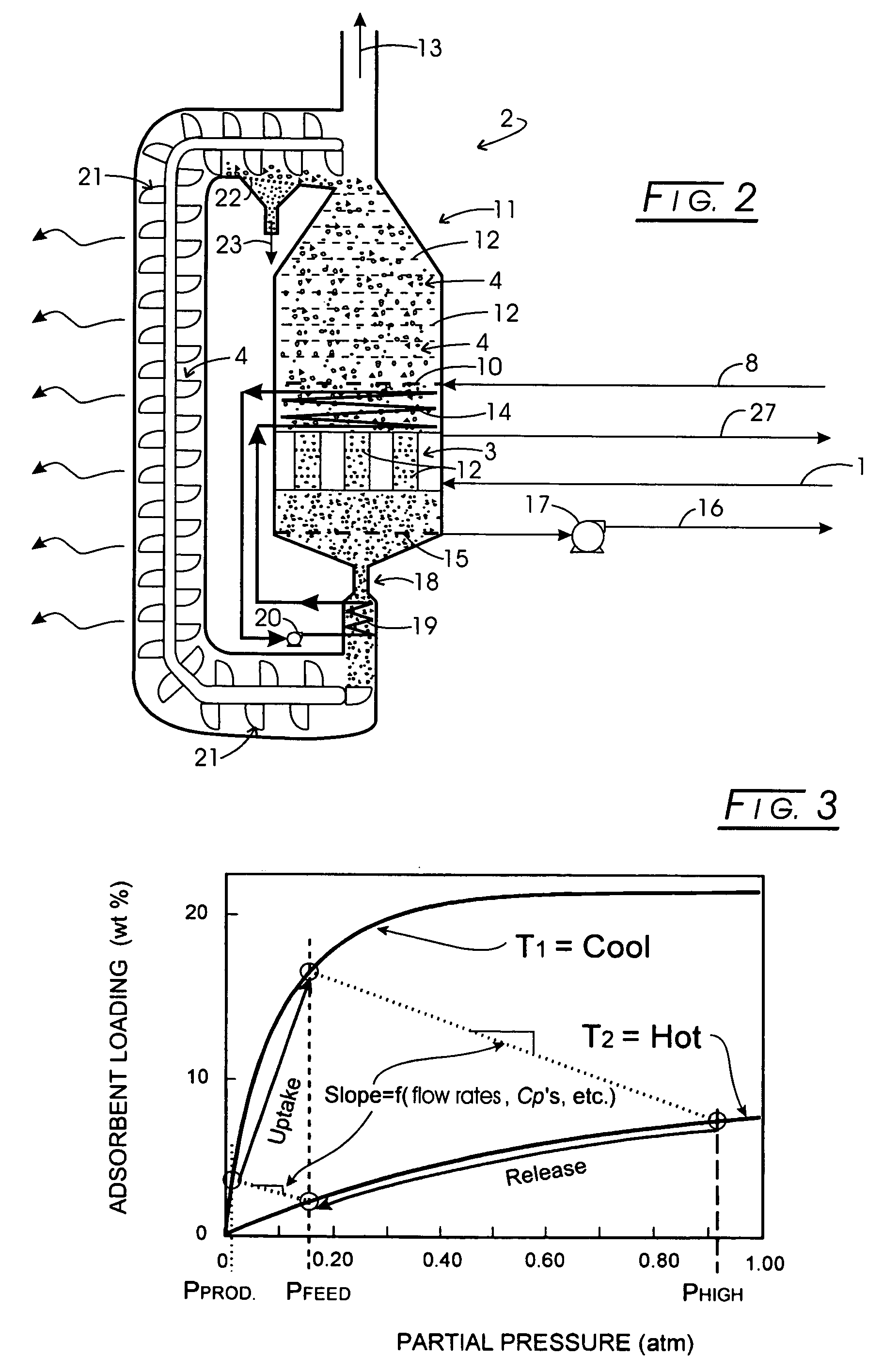Temperature swing adsorption system
a technology of adsorption system and temperature swing, which is applied in the field of adsorption system, can solve the problems of acid rain and global warming, no economical means to collect cosub>2 /sub>emissions from power plants or other point sources, and energy production from combustion of fossil fuels. , to achieve the effect of high shear stress
- Summary
- Abstract
- Description
- Claims
- Application Information
AI Technical Summary
Benefits of technology
Problems solved by technology
Method used
Image
Examples
examples
[0069] An experimental apparatus was assembled to test the basic concepts of this invention, and is shown in FIG. 6 with the reference numerals corresponding to those in FIGS. 1 and 2. The purpose of the example is to remove CO2 from simulated flue gas. In this case, CO2 is the SAC. The example, and in particular, the apparatus does not does not fully embody some of the mechanical features of the invention, which are impractical to employ on a laboratory scale. For example, it does not employ a conveyor (21 in FIG. 1) in the ordinary sense of the word. Rather reservoirs were constructed that could be interchanged, so as the adsorbent supply reservoir, 24, a collection reservoir filled, 25, and by employing a spare, it was possible to operate virtually without interruption. In addition, it was not practical to employ a combustion source for heat, but rather a hot oil heat source, 26, was circulated through the heat exchanger, as described under “Option 2: Ancillary hot media is heat ...
PUM
| Property | Measurement | Unit |
|---|---|---|
| temperature | aaaaa | aaaaa |
| temperature | aaaaa | aaaaa |
| temperature | aaaaa | aaaaa |
Abstract
Description
Claims
Application Information
 Login to View More
Login to View More - R&D
- Intellectual Property
- Life Sciences
- Materials
- Tech Scout
- Unparalleled Data Quality
- Higher Quality Content
- 60% Fewer Hallucinations
Browse by: Latest US Patents, China's latest patents, Technical Efficacy Thesaurus, Application Domain, Technology Topic, Popular Technical Reports.
© 2025 PatSnap. All rights reserved.Legal|Privacy policy|Modern Slavery Act Transparency Statement|Sitemap|About US| Contact US: help@patsnap.com



